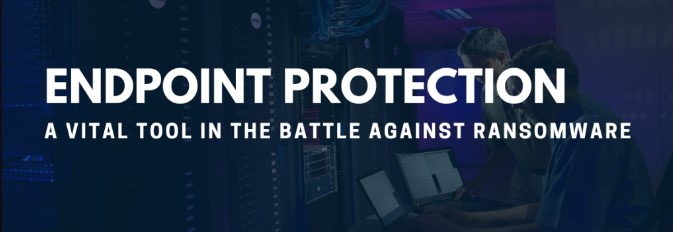Ransomware is becoming the biggest cybersecurity challenge for organizations of every size and scale.
According to Positive Technologies Dec 2021 study, hackers can penetrate more than 93 percent of a corporate network, making it easy for them to deploy trojans, Ransomware, spyware, and other exploits.
According to IBM Report, the ransomware breach cost around $4.54 Million in 2022. Since more and more organizations have started employing remote workers, cybercriminals consider endpoint an easy target.
Nothing protects endpoints better than an Endpoint detection and response system. Now the question is, what is EDR ransomware? Let’s continue reading and learning more.
Stop Ransomware Use EDR
EDR is a tool that is designed to prevent attacks on corporate endpoints. This software is designed to monitor endpoints continuously and store all activity data on a centralized dashboard. It keeps an entire database, which your security analyst can use to investigate behavioral activities. The software comes with automatic response and analysis tools.

Thereby, as soon as an endpoint protection tool finds malicious activity matching Ransomware or other malware, it alerts security administrators and isolates compromised endpoints. Your team can look into threats and perform risk management.
Get an Understanding of RansomwareThis kind of attack usually doesn’t happen all of a sudden. Before cybercriminals demand payment to release your network or send you a ransom note, they start gaining access. It happens months or even years before the attack.
Once they gain access through an endpoint, they start increasing their privileges on the admin level. Once they become successful, they install Ransomware and encrypt files. And it’s when they reveal themselves and demand ransom.
This attack is a big challenge for the security team. You can’t identify them before their final attack or ransom note appearance.
3 Ways EDR can Stop Ransomware Attacks
Now that you know how this malware works, the next thing is to understand how software stops Ransomware. Here are three methods that make it possible for the tool to let your organization prevent the high cost of a data breach.
1. Behavioral Detection CapabilitiesWhen it comes to detecting Ransomware with perfection and precision, an Endpoint detection and response system rescues your team. This tool is designed with behavior analytics capabilities, machine learning, and artificial intelligence. Unlike an antivirus, it does not entirely rely on signature-based detection.
You can identify abnormal behavior, untrusted application, and anomalies across your endpoint through this software.EDR has an AI that learns the normal behavior of the endpoint, and once someone invades any endpoint and behaves abnormally, it’s how this software detects malware.
2. Threat HuntingAs I told you before, hackers access your system long before they execute a malicious attack. Antivirus reacts when an attack happens, becoming ineffective in this scenario.
Your organization needs an endpoint security tool because it empowers your team to hunt for a threat. They can be proactive with the organization’s security approach.
An endpoint protection tool comes with search filters and alerts. Your team can search for key events on any endpoint to understand the application, files, and process running. They can analyze the behavior through threat intelligence. It’s how they can spot a potential ransomware attack early.
3. Offline ProtectionAfter Covid-19, many businesses opted for remote work culture. Remote employees access the organization’s network from anywhere via any device. As a result, it becomes easy for cybercriminals to access a network by stealing employee IDs and Passwords.
An employee can be online through a virtual Private network or public internet- where cyber criminals are ready to attack. When you have an EDR, dealing with threat actors is easy.
It offers full offline protection, even when your employee accidentally opens an email or document with malware. It automatically blocks malicious files and compromised endpoints, and it’s how ransomware attacks won’t spread in the entire network.
How EDR Keeps Your Security Team Two Steps Ahead of Ransomware?
Finally, you know what EDR ransomware is and how this software helps prevent this attack. How does your organization’s security team stay ahead of this sophisticated attack? Let’s find out more:
- Behavior Learning and Analysis: The big plus of EDR is behavioral learning. Cybercriminals are savvy; they keep changing techniques, tactics, and procedures during an attack. But what they can’t change is their abnormal behavior during an attack. It’s where your team can leverage the EDR tool and separate normal activities from abnormal ones to detect malware.
- Alerts: Many hackers try to access your network during off-business hours and holidays. Since an EDR monitors your endpoints nonstop and in real-time, when a threat actor tries to take control of your system by uploading a malicious file, your team will get an instant alert to respond.
- Automatic Response: Imagine an attack happens on an endpoint. Now it won’t spread to another endpoint once you have EDR. The software temporarily isolates this endpoint, and this automatic response buys time for your security team. They can analyze this activity and take required security measures.
